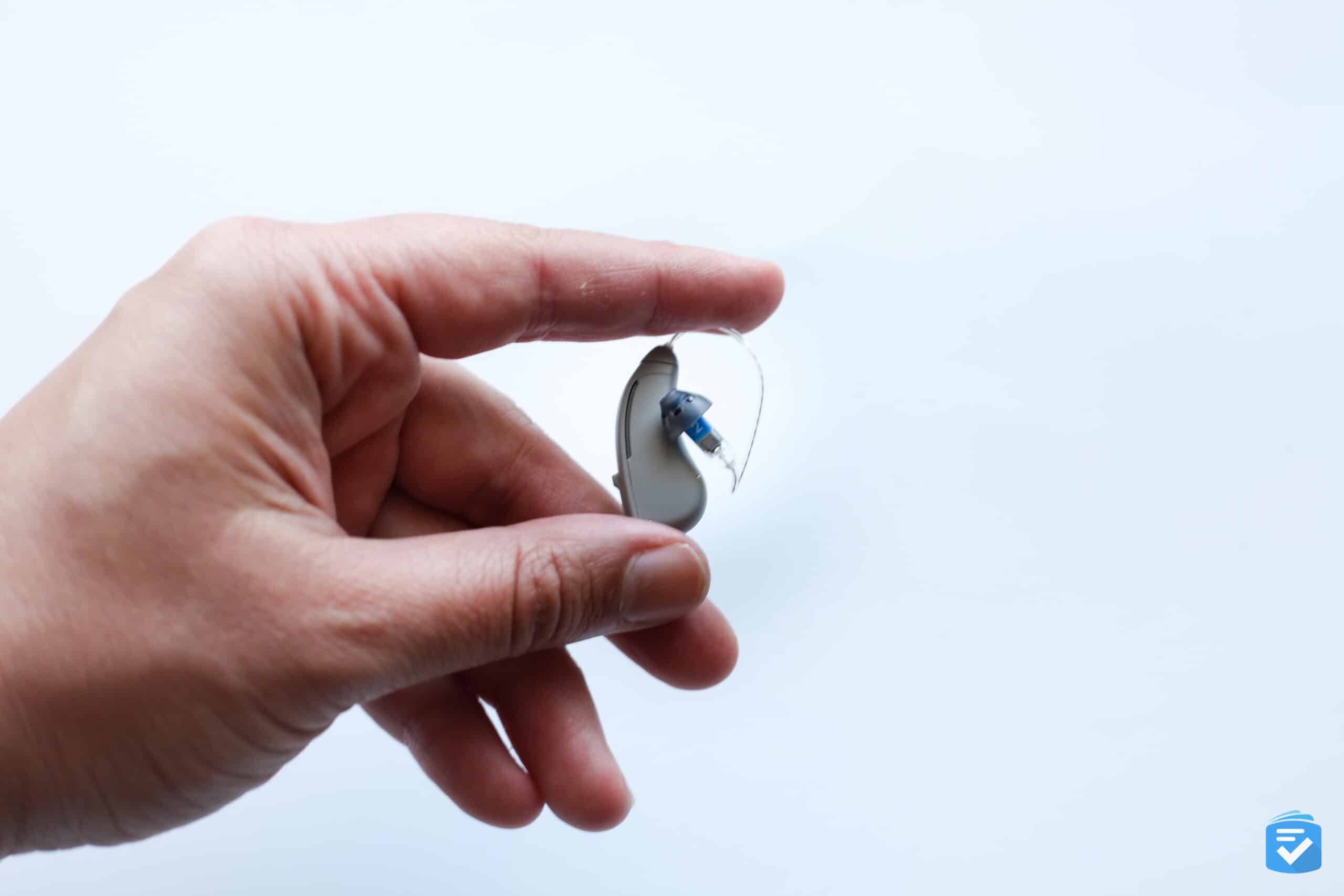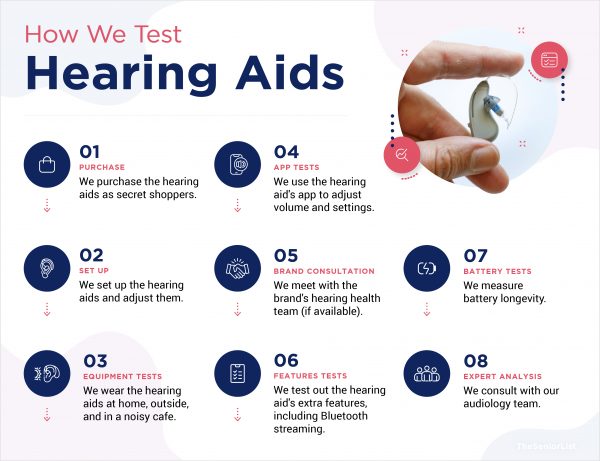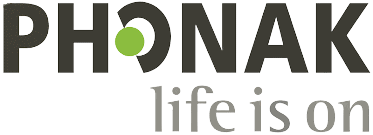The 3 Best Hearing Aids for Severe Hearing Loss (Audiologist Reviewed)

Hearing loss is one of the most common conditions among older adults. It is estimated that nearly 30 million people over the age of 60 have some form of hearing loss. Among that group, nearly 2 million suffer from severe or profound hearing loss. That variety of the condition makes it nearly impossible to partake in everyday activities such as conversing or listening to the radio without amplification. Luckily, there are special types of hearing aids designed to accommodate people with severe or profound hearing loss. In this rundown, we’ll take a look at some of the best options available.
Did You Know: These hearing aids are ideal for severe hearing loss, but they require in-person visits with hearing specialists. Read our rundown of the best over-the-counter hearing aids to find options you can purchase online.
Why Trust TheSeniorList?

Every hearing aid is different, and there’s hardly a one-size-fits-all device. That said, here is what we looked for when testing devices.
- Style and fit: Hearing aids come in several shapes and sizes, from hardly visible in-ear units to larger, more traditional models that fit over the ear. Since you’ll likely wear your device often, it’s always a good idea to try a few different hearing aids and see which ones are most comfortable. When determining the best style of hearing aid for you, the number-one factor will be your type of hearing loss.
- Battery function and type: In addition to long battery life, you’ll want to find a hearing device with batteries that are easy to replace. Many hearing aids use rechargeable batteries, ensuring you won’t have to travel to the store to keep your device powered.
- Lifestyle: Your hearing aid needs will depend on your activity level. Are you often outdoors or in noisy environments, or do you tend to remain at home, having conversations with little background noise? Whatever your situation, a trustworthy manufacturer should be able to advise you of which models suit your particular lifestyle.
- Trials and warranties: Hearing aids can run anywhere from $300 to $5,000. With this in mind, we recommend going with a hearing aid that offers a risk-free trial period in addition to a warranty, ensuring that you get your money’s worth for such a costly product.
- Customer support: Despite their simple appearance, it’s common to run into technical or maintenance issues with hearing aids. To address this, you’ll want to make sure the retailer has staff on hand or specialist centers, where you’ll have access to expert advice on how to use your hearing aid.
Our Favorite Hearing Aids for Severe Hearing Loss
1. Phonak - Best Accessories
 View Pricing
Links to ZipHearing.com
View Pricing
Links to ZipHearing.com
What We Like Most:
- Nationwide clinics
- International warranties
- Solutions for profound hearing loss
- Useful accessories and streamers

Overview
Cost: $3,000 to $6,000 for a pair
Phonak has been a leader in power hearing aids for many years. It’s often a choice for pediatric patients with profound hearing loss. Even more impressive is its array of accessories that are compatible with hearing aids for people with severe to profound hearing loss.
Phonak’s Naída Lumity delivers rich sound to people with moderate to profound hearing loss. With the myPhonak app, you can control your hearing aids from your smartphone and even stream audio from your phone to your hearing aids.
Naída Lumity hearing aids are compatible with Roger accessories. Roger products are accessories that allow you to participate more easily in multiple-talker conversations. There are three styles of Roger. The Roger Pen can be held by the listener and be discreetly pointed at whichever person is speaking, allowing you to control and quickly switch focus among speakers. The Roger Select and Roger Table Mic II are disc-shaped mics designed to sit in the middle of a table and facilitate participation in group conversations. The mic itself chooses which speaker to focus on and automatically switches the direction of focus when the speaker changes, which means you can get the benefit of a multi-talker conversation hands-free.
Phonak hearing aids must be purchased from a hearing care specialist, so the price will vary depending on which one you visit. Naída Lumity devices, however, will likely run you about $3,000 per pair for entry-level technology and $6,000 for high-end technology. Phonak also offers a one- to three-year limited warranty on all its devices. Most retailers also offer a 45-day trial period. It’s best to confirm the exact warranty and trial period prior to purchase.

Pros
- One- to three-year international warranty
- Proven sound quality
- Bluetooth streaming
Cons
- Must be purchased from a hearing specialist
2. Oticon - Best for Profound Hearing Loss
What We Like Most:
- Risk-free trial
- iPhone connectivity
- Range of fits and styles
- Smartphone adjustments
Overview
Cost: $3,000 to $6,000 for a pair
Oticon offers a variety of hearing aid models suited for people of all ages and all types of hearing loss, from mild to severe. What impressed us most about Oticon, however, was the great sound quality and feedback (whistling) management in its power hearing aids.
Oticon bills its Xceed device as the world’s most powerful hearing aid, and it’s plain to see why. The Xceed sound processing focuses on allowing you to hear all the noises around you for a true-to-life hearing experience. With its proprietary BrainHearing technology, the Xceed also prevents whistling and static. That allows you to focus on the sounds that matter most to you, whether it’s a conversation with loved ones or a song on the radio.
The cost for Oticon’s Xceed will vary based upon the retailer, but a pair will likely cost you somewhere between $3,000 and $6,000. With any of its devices, most providers offer a 30- to 45-day risk-free trial, during which you can return your device for a full refund. There are also various yearlong warranties available, depending upon which device you choose and the retailer from which you purchase it.
The Oticon Xceed is great for anyone with severe to profound hearing loss. For more plugged-in users, the Xceed can be paired with iPhones without any additional accessories, and it can be paired to any smartphone for hands-free streaming and talking.
Pros
- Great sound quality
- Smart features
- Smaller size than many power aids
- Risk-free trial
Cons
- Somewhat high price tag
- Must be purchased through a hearing professional
3. ReSound - Best for iPhone Connectivity
 View Pricing
Links to ZipHearing.com
View Pricing
Links to ZipHearing.com
What We Like Most:
- Free online hearing tests
- Bluetooth audio streaming
- Highly customizable hearing aids
- 1-4 year warranties

Overview
Cost: $3,000 to $5,000 for a pair
ReSound hearing aids are centered around the idea of replicating natural sounds for their users. For people with mild to profound hearing loss, the company offers expertly designed behind-the-ear models that amplify into whatever audible range you need. ReSound was the first company to offer direct-from-iPhone streaming in its hearing aids, and it excels at it.

ReSound’s most advanced model, the Enzo Q, is made specifically for people with severe to profound hearing loss. The hearing aid provides direct-from-iPhone streaming, which can be a lifesaver for patients struggling with hearing on the phone. The Enzo Q also has great background-noise reduction so you can focus on what matters most.
There are three technology levels with ReSound’s Enzo Q, all of which come at different price points. Expect to pay a minimum of $3,000 for a pair of the hearing aids. Warranties and returns will vary depending on the retailer, but most ReSound products include a trial period after purchase. All ReSound hearing aids also will be covered under a warranty of one to four years, depending on the model.
>>>Read more: The Best iPhones for Seniors
ReSound hearing aids are ideal for iPhone users, individuals who already have or may get a Med-El cochlear implant, and people who have tried other solutions for severe to profound hearing loss and have been dissatisfied by the audio quality. ReSound hearing aids offer great streaming connectivity and natural sound quality.
Pros
- Tinnitus relief
- Ability to adjust settings through the ReSound app
- Find My Hearing Aid feature
- Compatible with cochlear implants
- Online video tutorials
Cons
- Must be purchased through a hearing professional
What Is Severe Hearing Loss?
Not all hearing loss is created equal. Similar to vision impairment, there are different degrees of loss that require different solutions.
Keep that in mind when looking to purchase a hearing aid, since different devices are made to accommodate different degrees of hearing loss. Most over-the-counter hearing aids are suitable for people with mild to moderate hearing loss, but only certain devices can accommodate the needs of someone with severe to profound hearing loss.
Degrees of Hearing Loss
| Type of hearing loss | Hearing threshold | Symptoms | Common sounds you might miss |
|---|---|---|---|
| Normal hearing | 0 to 25 dB |
|
|
| Mild hearing loss | 25 to 40 dB |
|
|
| Moderate hearing loss | 40 to 60 dB |
|
|
| Severe hearing loss | 60 to 80 dB |
|
|
| Severe-profound hearing loss | 80 to 90 dB |
|
|
| Profound hearing loss | 90 dB or higher |
|
|
What Causes Severe Hearing Loss?
For most people, hearing loss is caused by a combination of noise exposure, genetics, and age. Naturally, the latter is why the condition is much more common in older adults. There are also, however, several external factors that can contribute to hearing loss.
- Noise exposure: Aging naturally brings about wear and tear on the nerve cells inside our ears, but exposure to loud noises can accelerate the process. Individuals with long-term noise exposure — often factory and construction workers — are likely to have more hearing loss. It’s always a good idea to stay away from loud noises or wear hearing protection when such noises can’t be avoided.
- History of ear infections: Any history of recurrent growths, infections, or eardrum ruptures can potentially lead to permanent hearing loss.
It’s important to take care of your ears. Once the sensitive parts of your ears are damaged, there is often no way to repair them. A quality hearing aid, however, can go a long way toward restoring the ability to hear, especially for people with severe to profound hearing loss.
What to Look for in a Hearing Aid for Severe Hearing Loss
I have fit many patients with profound hearing loss. One thing to keep in mind is that if you have been wearing one brand of hearing aids for many years, it may be difficult to switch to another. That’s because your brain is already used to the sound quality and sound processing of a particular brand. Still, you know what works for you. If you’re in the market for new power hearing aids, there are a few qualities I considered that you may want to look for.
- Sound quality: It goes without saying that a hearing aid should produce sounds audibly and clearly. Different hearing aids have different sound qualities, and some of what makes them work for you may boil down to individual preference.
- Adjustable settings: Almost any hearing aid can perform well in a quiet room with only one person talking, but it’s a whole different task for a hearing aid to pick up speech in a room filled with noise. With that in mind, I looked for hearing aids with directional microphones and noise-cancellation features that help you focus on the sounds you want to hear while tuning out the ones you don’t.
- Accessories: People with severe to profound hearing loss often need additional accessories to maximize their communication. The availability and compatibility of accessories can make a big difference in quality of life.
Bottom Line
For people with severe to profound hearing loss, a hearing aid is one of the most essential ways to continue living life to the fullest. When looking into a hearing aid, be sure to weigh your options carefully, since high-powered devices like these do not come cheaply. Luckily, most retailers offer some sort of trial period, ensuring that you’ll be able to find the right hearing aid for your needs.
To learn more about hearing aids, check out our helpful guides.

